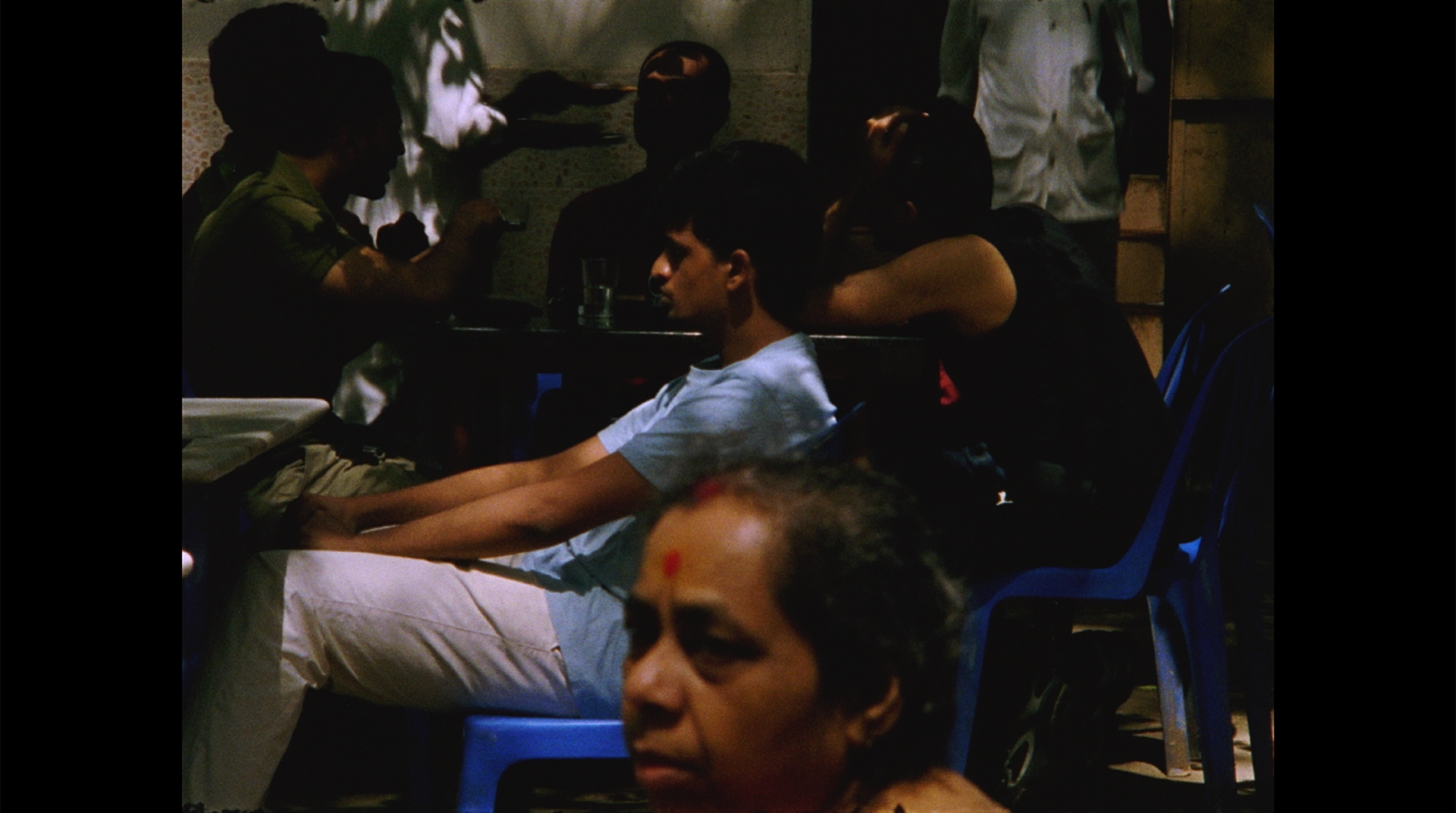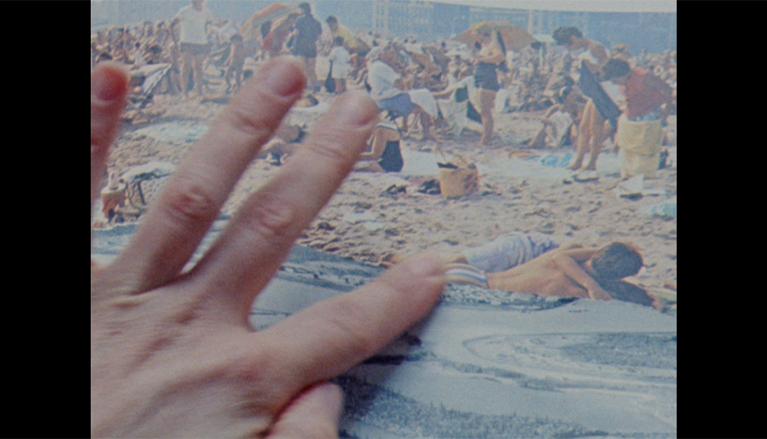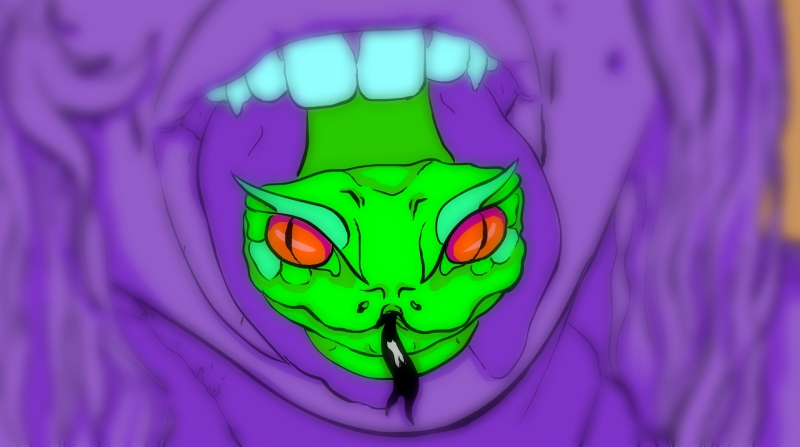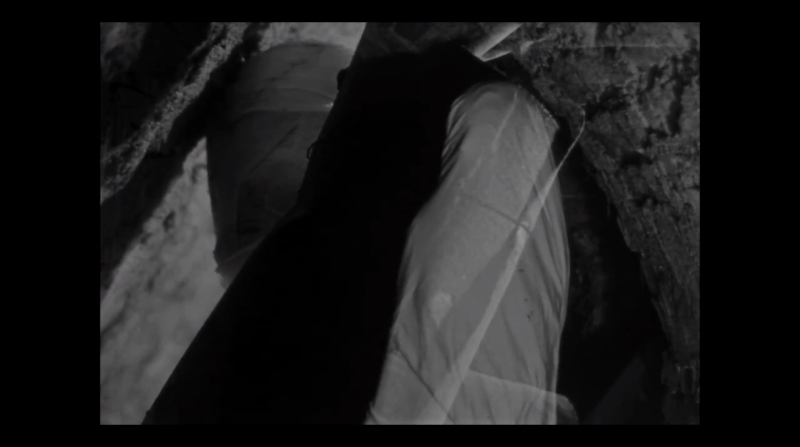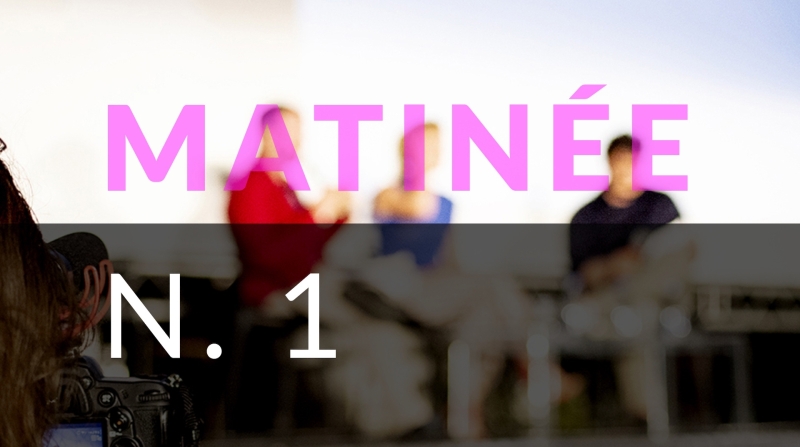with the presence of the director and the curators Rinaldo Censi and Federico Rossin
Tutto qui
Film, 12’, 16 mm, colore
Prod. BnF / Anna Marziano
Italia/Francia 2022
Al largo
Film, 61’, Super8, 16mm, bianco e nero / colore
Prod. Anna Marziano, con il sostegno della Senatsverwaltung für Kultur und Europa
Italia 2020
Au-delà de l’un
Film, 53’, Super8, 16mm, bianco e nero / colore
Prod. Anna Marziano, Spectre Prod. and Joon Film , in collaborazione con il Goethe-Institut Max Mueller Bhavan e CNC (Francia) Aide à l’innovation audovisuelle
Italia/Francia/Germania 2017
Orizzonti orizzonti!
Film, 12’, 16mm e video, bianco e nero / colore
Prod. Teatri del Vento
Francia 2014
Variations Ordinaires
Film, 48’, video e microscopio, bianco e nero / colore
Prod. Anna Marziano, co-prodzuione Le Fresnoy,
Italia/Francia 2012
Installazione: Prod. Le Fresnoy,
Francia 2012
De la mutabilité de toute chose et de la possibilité d’en changer certaines
Film, 16’, 16mm, bianco e nero / colore
Prod. Le Fresnoy
Francia 2011
La Veglia
Film, 2’, Super8, bianco e nero / colore
Prod. Anna Marziano
Germania 2010
Mainstream
Film, 25’, video, colore
Ateliers Varan
Francia 2009 (con Dan Perjovschi)
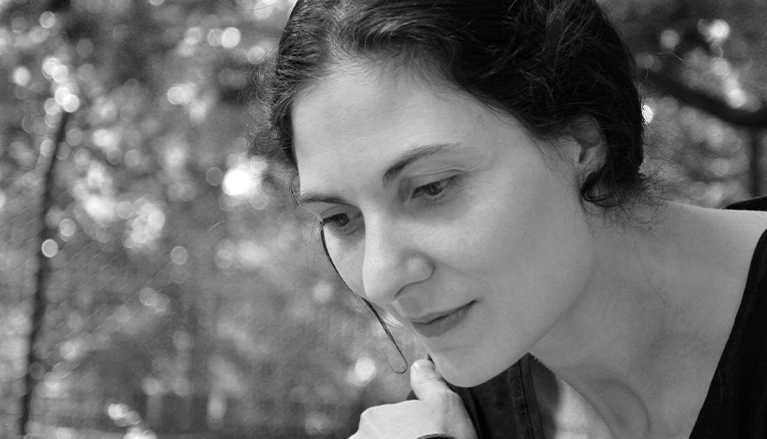
Anna Marziano was born in Padua in 1982 and soon became passionate about music, analogue photography, literature, and the joy of thinking. She took various courses in experimental theatre in Padua. Film viewings and a strong nomadic inclination went along with studies in Political Science.
In 2003, she moved to Rome and trained as director of photography at the Centro Sperimentale di Cinematografia under the guidance of Giuseppe Lanci (cinemaphotography) and Luigi di Gianni (documentary film-making). Later on, she moved to France and graduated in documentary film-making at the Ateliers Varan (Paris), where she met Marie-Claude Treilhou, Yves De Peretti and Leonardo di Costanzo. With the support of Fresnoy - Studio National she made Della mutevolezza di tutte le cose e della possibilità di cambiarne alcune (2011) and Variazioni ordinarie (2012), selected at various festivals and international arts venues. In Italy, her early works are shown at Torino Film Festival, Nomadica, Avvistamenti (Bisceglie), Centro Nazionale del Cortometraggio.
Anna Marziano experiments with various analogue cameras and microscopic images. She follows her works from their inception to production personally, including sound, cinematography, and editing.
In 2013 she moved to Berlin. With the support of the Goethe-Institut, she was invited to bangaloREsidency in southern India, where she began filming Al di là dell'uno (2017) which will also be filmed in France, Germany, Italy, and Belgium.
During the preparation and shooting of the films Variazioni ordinarie and Al di là dell’uno, Anna Marziano created two installations with the same name, presented respectively at the Fresnoy-Studio National and at the Goethe-Institut Max Mueller Bhavan.
Between 2016 and 2020, thanks to the support of the Berliner Senat, he made and edited the film Al Largo (Special Jury Prize at the Torino Film Festival).
The first retrospective of her works was presented at the Volksbühne (Berlin) and at the Wolf Kino (Berlin) in 2019.
In the winter of 2020-2021, during her residency at the Bibliothèque nationale de France, she made Tutto qui working remotely with the digital archives of the BnF during the lockdown period.
Her films are held at the Cineteca di Bologna and the Cineteca Nazionale of Italy, and are visible on online platforms such as MUBI, DAfilms, TËNK.
She currently lives in Padua and Berlin.
What is your educational background?
I grew up in a family with great differences among its members, with a climate of mutual curiosity. Like it or not, the grayness of the province of Padua was a great school where to deal early on with nihilism and train oneself to circumvent it. Some teachers and classmates during my high school years were important; the attempt (always renewed) to practice active citizenship (hence later studies in political science); listening to music to which Vincenzo Martorella (Jazzit) introduced me. And then the force unleashed by matter: the sea, rocks, Etna, the bodies, the warm dryness of wood. And about photographic film... I remember that sense of agility and fullness I felt when I discovered analogue photography: the joy of being able to roam the streets and among people, the pleasure of developing and printing in the garage, observing some images that challenged me fiercely... Yet static photography also showed me its limitations: I was looking for forms in which words and images, thought and musicality, could be more fluidly associated. I found in cinema a possible place where I could combine the poetic and the political. I particularly related to the frugality of a certain documentary cinema.
I enrolled at the Centro Sperimentale in Rome, where I trained as a director of photography and where I met Luigi Di Gianni (documentary filmmaking) and Giuseppe Lanci (cinematography). In 2009, when I moved to Paris for a documentary filmmaking course at Ateliers Varan, I felt I had finally found my tool - the film camera - thanks to the support of Marie-Claude Treilhou and Yves de Peretti.
I spent a golden year at the Fresnoy-Studio National in Roubaix, in the company of passing-by artists, friends and colleagues; then it was the turn of an immersion in experimental cinema in Canada, South India, a long stretch of my life in Berlin, the good luck of some exchanges - even brief ones - during residencies or screenings... And for the last six years, my daughter has been there to train me!
What are your most crucial cinematic and artistic references for your work?
The vital freshness of the films of Agnès Varda, Johan Van der Keuken, and Margaret Tait. The poetry of the films of Jean-Daniel Pollet, Bruce Baillie, Artavazd Peleshian, and Jean Painlevé. The intensity of Chantal Akerman's Toute une nuit. Some works by Straub - Huillet, by Peter Watkins, and some by Jean Rouch that lead straight to more recent attempts at inclusive art and theatre. Abbas Kiarostami's films where it is clear that the categories of fiction and documentary do not hold. Luc Ferrari's research in sound. The performances of Francis Alÿs, etc. etc. etc.
Since your first medium-length film - Variazioni ordinarie - you have chosen the path of essay film. What does this term evoke in you, and why this stylistic choice?
I find Della mutevolezza and Al di là dell'uno more explicitly connected to the form of essay film, at least in my intentions I felt like this.
While preparing Variazioni ordinarie, I was reasoning about how to express out of my mother tongue, in the words of others. I was reasoning about how to succeed in shaping singular-plural interdependence. I had read and digested various reflections on participatory art expressed by Claire Bishop. I imagined a light film form along the lines of Chantal Akerman's News from Home, but I was looking for something more impersonal that I found in the pages of Virginia Woolf's The Waves.
In literature, I love certain uncategorizable texts in which thought and poetry merge. For a long time, I favoured essays and poetry and felt a certain disinterest in the narrative form, which is now unexpectedly becoming a source of real stimulation.
Another art form that your works evoke meta-linguistically is that of collage: how do you work; how do you assemble sequences? What is the role of the mise-en-scène?
Your films, and not only because of the important and serious themes they touch on, evoke the structure of human thought: and it is always an open, analogue, moving thought. How do you work to tie together associations, reflections and sensations?
I feel very close to the open form of collage. When I think about the film during its preparation - that is, when I try to be as close as possible to the incandescent core of the necessity that makes it arise - I think of film as a dynamic collage, faithful to the movement of thought in its encounter/clash with reality.
When I work on the editing, I edit the footage like a musical composition, where the relations within the material count.
I like to let the moments coagulate in the film experience: Mutevolezza was even too obscure, and later I tried to leave my works more open. In some films, working this mixture felt like a struggle (Della mutevolezza, Al di là dell’uno) and in others more like a dance (Orizzonti orizzonti!, Variazioni ordinarie, Al largo).
While I was initially attracted to ‘observational documentary,’ I was often frustrated by it: sometimes, despite the rightness of intentions, I became tired of the habit of departing from the individual and going to the universal. And here we return to my interest in the collage form and in a film space capable of holding together - at the same time and on the same plane - a living heterogeneity.
The mise-en-scène is manifest, and this too must have its own immanence: for example, in Variazioni ordinarie, I wondered how the exchange between the participants could already have meaning in itself and not just be oriented to the purpose of making an installation or a film. Otherwise, it would be an unproductive gesture. In addition to the pictorial aspect (image texture, light, composition), I would say that I am interested in the encounter with a person or a group proposing situations (a reading, a listening moment, a question, a screening, a prepared environment) from which actions can then emerge.
The subtlety of not saying everything, of not authoritatively flooding the viewer with words and data, of letting the word decant through evocation rather than a representation of reality, seems to be an innovative way of taking up the legacy of feminist cinema today without the rhetoric of militantism anymore, but with the same demands of critique and form. What are your thoughts on this?
All the works I have made depart from concerns that I find important to address individually and plurally. I do not intend to give up contributing in some (desperately) constructive and generative way. It is important to make an effort so that practice speaks for itself. To turn on the camera is to care for someone/something... to try to transform, soothe, and nurture the reality around us on a granular level.
I envision the interconnection of ecological and social justice, the recognition of caring work, the transformation of violence of identity, the narrowing of the violent gap in the distribution of wealth and inequitable access to resources... Everyone contributes in their own way, and in this sense, it makes sense to associate the beginning of shooting with the word "action!"
And then there is the movement that perhaps motivated even our ancestors to paint negative hands on the walls of Magdalenian caves...
There are two different versions of Henri Matisse's The Dance. In fact, there are actually three. The first was made by the painter in 1909, and you can find it today on display at the MoMa in New York. The second was commissioned the same year by the Russian collector Sergei Shchukin. With Dance II, and Music, he intended to decorate his staircase. The two paintings can be visited today at the Hermitage, in St. Petersburg. Then there is a third piece that bears the same title: three panels painted in 1933 for Doctor Barnes and his Foundation, in New York.
We are not off topic. It’s not the wrong subject. Matisse's Dance II appears at the thirty-fifth minute of Al di là dell'uno, a film that Anna Marziano made in 2017. In a garden, four hands are holding the borders of a colour reproduction of Matisse’s painting. It must have been taken off the wall. A female voice (we see the woman, a fraction of a second earlier, holding the protective glass of the reproduction) comments: "It occupied a whole wall really, I still remember the salon." It is possible that, at that moment, Anna Marziano was filming her own family. But the memory of the painting visited goes beyond the mere family anecdote. We feel that it can instead lead to the core of her work. While the four hands are supporting the copy, and the camera is rolling, the female voice-over notes: "I liked it because it was this dance ... Because they were holding each other’s hands, and then there were five of them, just like in our family." And she continues: "It seems to me, however, that a part does not close properly, if I am not mistaken. And so, in short, there was room for other entrances, just in case...»
Brice Marden, one of the most important contemporary artists, has well grasped the inner meaning of the two paintings on display at the Hermitage: "Incredible paintings. They come straight from cave painting. They are impressive. Their respect for joy, nature, music, and dance: such expressive elements. One of the most important things in Matisse is the richness and life that he manages to incorporate into a painting, so that a painting means more than it shows."
Let’s dwell on the mother. In the painting, something does not close. The hands of one of the slender figures are not joined with those of the other to its left. They don’t come full circle. An open, indefinite margin is left. Some open room. Open to what? To answer this question, we need to go back to Matisse. Not to the Dance, but to his later papiers découpés, paper cuttings.
The art of decoupage, or that of collage, are a way of making art. Matisse used those at the height of his career. This practice can be found in the films of Anna Marziano. In Al di là dell'uno e Al largo (2020), for example, hands cut out, juxtapose, superimpose, shift cut-out paper figures. And it seems to us that these gestures are reminiscent of the way in which Marziano composes her films, i.e., how she constructs her shots: an image is accompanied by a sound, often autonomous. Art of editing. Art of collage. It is from this compositional process, from this gesture, in which sounds are faced with images, that something in the frame emerges, takes a position, perhaps for a few seconds.
It's almost as if every shot of Anna Marziano worked like those chess pieces that Matisse loved to mention. He, who was not fond of never-changing pieces (signs), would rather have preferred to insert: "Figurines resembling whatshisname, or some other person, and more, people whose lives we know - then I could play, but inventing a different sign for each pawn in each game." The chess game would then become a kind of novel or adventure. Something similar to Anna Marziano's films. An adventure of images and sounds. Scissors, splices: the core of the idea is found here. Never play the same game twice. Never combine the same elements twice. From this criterion a rhythmic modulation seems to surface, a freedom of the subject. The juxtapositions could multiply, like the paper figures handled in her films. "Decoupage – Matisse reminds us – is the simplest and most straightforward way that I have now found to express myself. You have to study an object for a long time to know what its sign is. At least so that, in a composition, the object becomes a new sign that is part of the whole while preserving its power."
We feel that in Anna Marziano's films the juxtapositions, the editing, tend to never come full circle, leaving a window open. Some free space, like the hands that miss each other in the Dance. A gap that resonates between the shots and the feeling they cause in the viewer. It is the strength of her films, which, in most cases, are film-essays. They continuously test the potential concatenations of images and sounds. In Al largo a man evokes his spinal accident. We hear him reflecting on the difficulty of finding a cure: "The device should be calibrated so that the waves it sends to you manage to block those of pain." The image under the voice is that of rippling sea waves; but their motion reminds us of a spinal landscape. The noise of the waves rises.
Similar examples emerge from her films. Images, sounds, texts, objects, animals, plants. Everything circulates, collides or metamorphosizes. Or it seems to disintegrate, alter, like the stock film buried in Tutto qui (2022). The aquatic element, floating, is often present. As if the pace of the editing depended on different wave motions. In his Mediterranean, Predrag Matvejević lists the latter’s diversity: regular or irregular, longitudinal, transverse or crossing, surface, depth, solitary, frequent, random, lulling, even cyclical. At times they can be impetuous, as in La veglia (2010): a hand holds the scissors and cuts the petals of brightly coloured flowers.
We should also mention Anna Marziano’s ability to capture and frame light, its reflections. Or how, in De la mutabilité de toute choses et de la possibilité d'en changer certaines (2011), the human figure ends up swallowed up by a snowy landscape reminiscent of a hieroglyph. And we should also discuss some shots of Variazioni ordinarie (2012) that seem to spring from Chantal Akerman’s News from Home. Night scene: signs of a grocery store flashing. A hustle-and-bustle of human figures coming and going. Voices telling their existential ordeals. Matching shots between actions of the figures. There is a whole precision, a - never sentimental - accuracy of feelings, that modulates her films. The grace of Anna Marziano is to know how to achieve it by way of scissors, glue, splices. A thought emerges from this. That is, the measure and richness of the things shown, juxtaposed – their singularity, their equipoise. (1)
Rinaldo Censi
(1) Matisse’s quotes come from H. Matisse, Scritti e pensieri sull'arte (Raccolti e annotati da Dominique Fourcade), Einaudi, Turin, 1979; Brice Marden discusses Matisse in in J.-C. Lebensztejn, Huit propos d'artistes sur Henri Matisse (1974-75), Centre Pompidou, Paris, 2020; Predrag Matvejević describes the motion of waves in the first pages of Mediterraneo, Garzanti, Milan, 1991.
ALL SCREENINGS ARE FREE
